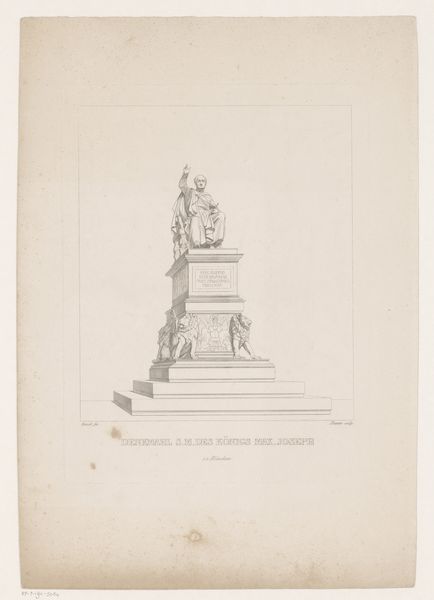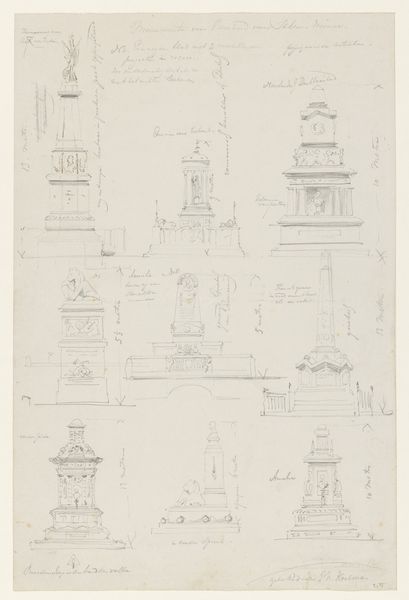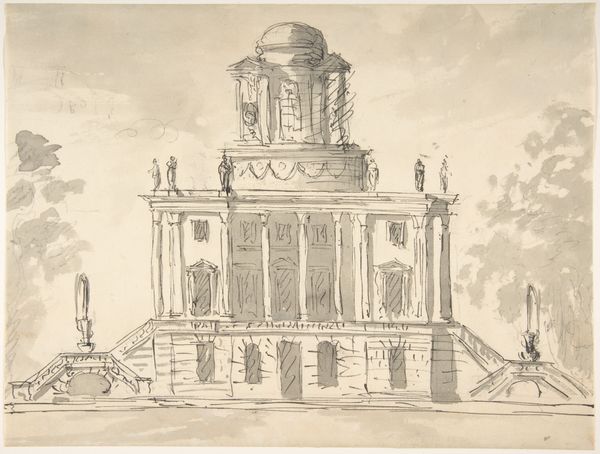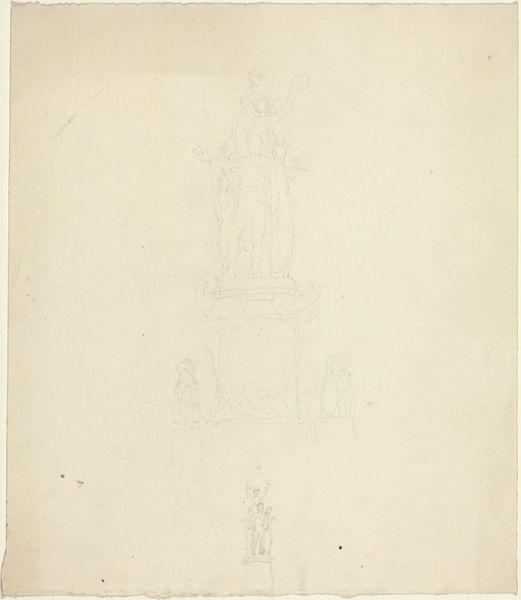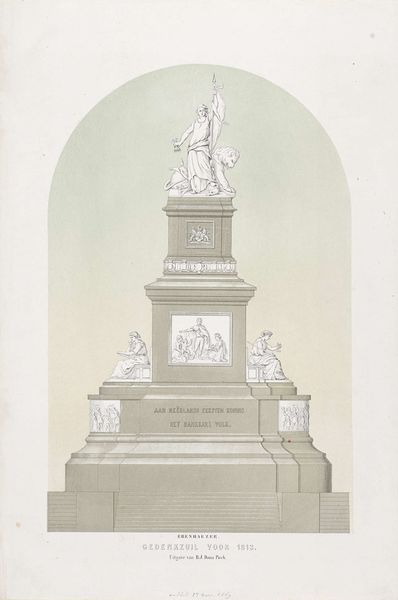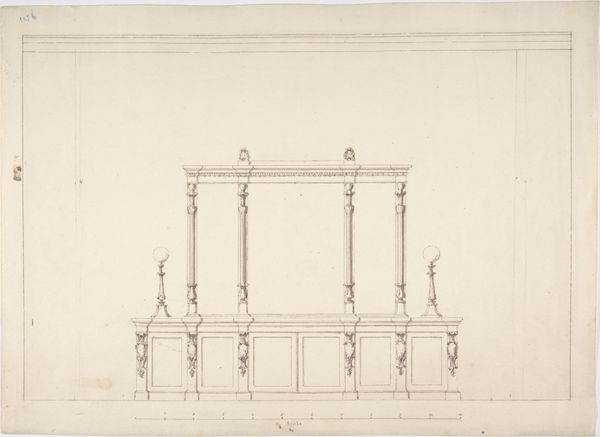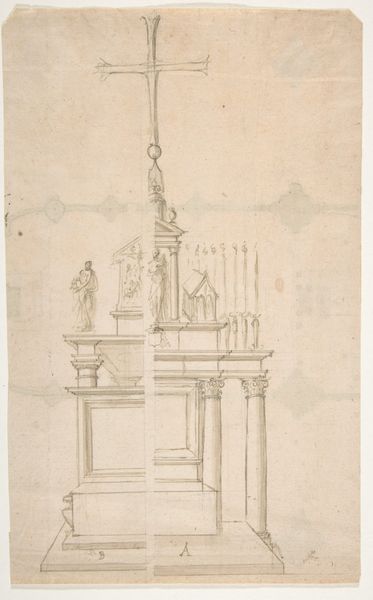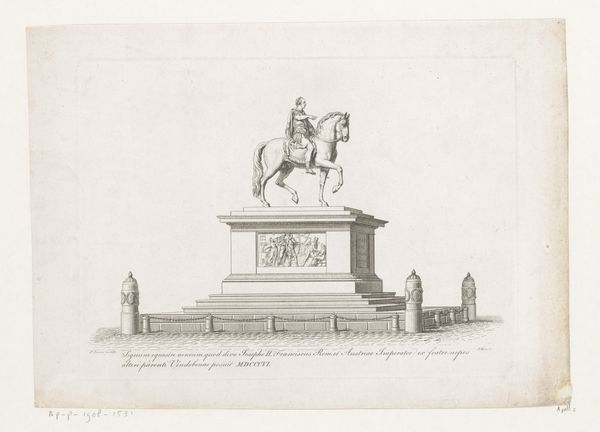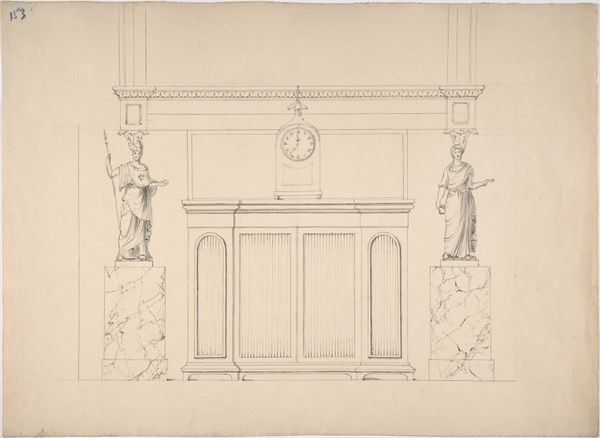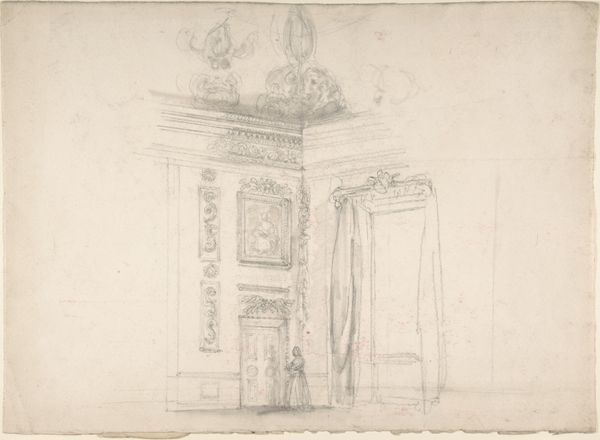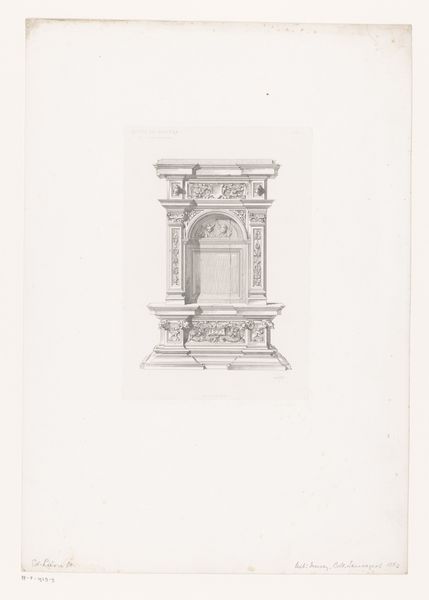
Schetsblad met ontwerp voor het monument voor Bernhard, hertog van Saksen-Weimar, op het Huygensplein te 's-Gravenhage 1863
0:00
0:00
Dimensions: height 410 mm, width 482 mm
Copyright: Rijks Museum: Open Domain
Editor: So, this is Johan Philip Koelman’s 1863 pencil drawing, a “Schetsblad” or Sketch Sheet, for the monument of Bernhard of Saxen-Weimar. The neatness, precision...it’s almost ghostly. What's your take when you look at this, imagining this monument existing in the world? Curator: I’m struck by the monumentality captured in such delicate lines. It's like hearing a symphony played on a single flute. The drawing suggests a very particular moment in 19th century European history when Neoclassicism was really solidifying public virtue into stone...or planning to! The clean lines, the elevated figures, the clear message - but it's all just a ghost until constructed, isn't it? It makes me wonder if Koelman felt that tension. Do you sense any hint of doubt or...irony? Editor: Irony is interesting! I was so focused on the clean lines I missed a story. Those smaller relief sculptures decorating the base… What narratives might they hold, and do you think they reflect the virtues the planners had in mind? Curator: Precisely! Those details *are* the narrative. Think of them as carefully curated propaganda in stone. What qualities were most lauded in Bernhard, do you suppose? Military leadership, civic duty...something else? And how would those *translate* into an image for public consumption? It’s like a puzzle box – each little scene adds to the overall intended effect. Though sometimes the "effect" achieved is a tad heavy-handed. It does makes one pause to consider the politics involved when any public statue is constructed, whether now or back then, wouldn't you agree? Editor: It really does. Looking at it this way I feel like the sketch holds more significance. It makes me appreciate seeing all that can be hidden behind what initially seems like just an etching. Curator: Yes! It's the beautiful, flawed, fascinating process of turning history into art, or maybe the other way around!
Comments
No comments
Be the first to comment and join the conversation on the ultimate creative platform.

